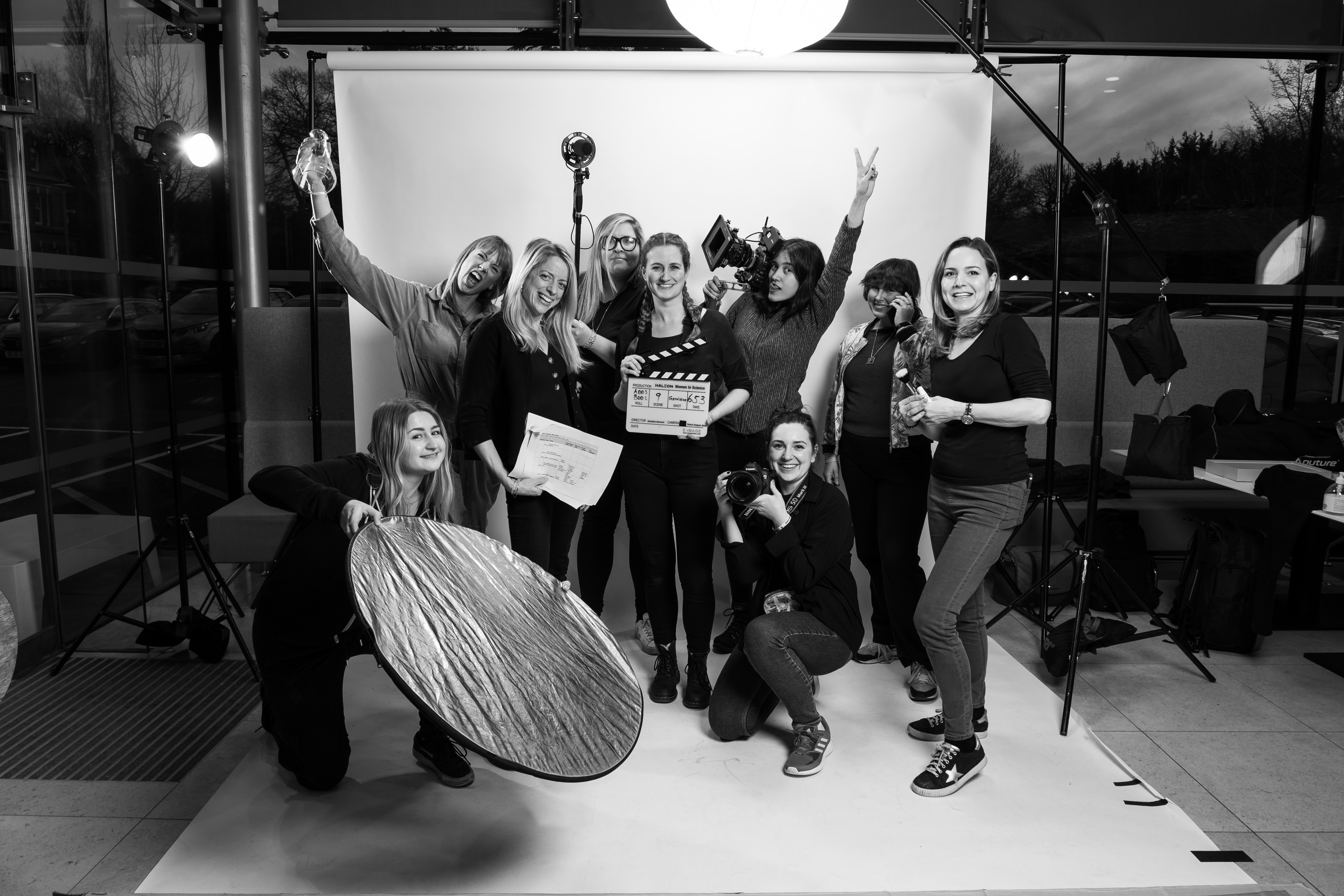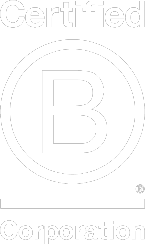Sarah Watts (Art Director), Geraldine Clermont (Director), Fiona Hardeman (Sound recordist/designer), Marlijn Hegge (Camera Assistant), Kate McEvoy (Producer), Francesca Kemp (Editor),
Leigh-Ann Hiley (Post Production Supervisor), Rachel Hawthorne (Production Assistant), Sam Jones (Production Manager).
In January this year, DRPG set about shooting a new client campaign film. Surprisingly, or maybe unsurprisingly, it marked a first for everyone involved. On this project, the entire film crew was female. The team got talking on set and discussed penning a letter to the Film Industry. This is their letter.
Dear Film Industry,
For the first time in our collective careers, we found ourselves on a production with an all-female crew. As shooting began, we all talked about what a rare occurrence this was, but it raised questions too. It’s 2023, right? How is it even possible that this was our first all-female crew? Yes, some of us are fairly new to the industry, but others have over 15 years’ experience. Still, the same stories about challenges we face as women kept coming up. So, with the support of DRPG, we penned this open letter to the industry, to our colleagues, to our clients, to you. There are a number of misconceptions around women working within the UK Film Industry and we wanted to address some of them.
Misconception number one: Which roles we are supposedly good at
As we began work on the film, we started to chat about how we have all dealt with numerous subtle, and a few more blatant, assumptions about what our roles, our skills, and our interests for future career development within the film industry should be.
“There is still a prevalence that women are seen as the right fit for the organisational/administrative role, with the more creative, leadership on location roles sitting in the male camp.”
“I often felt like I was steered towards office-based production jobs by those in charge, with one colleague even telling me that I wouldn’t make it as a camera assistant as it was ‘a very technical role’.”
Misconception number two: What we should look like
Who you know is absolutely essential in our industry. Even if there is no conscious bias in place, it’s easy for leaders to hire crews that look just like them, and to pigeon-hole people into the roles they think are appropriate. Unfortunately, this means our industry is not only very male, but also very white and almost exclusively able-bodied, simply because that’s how it’s always been.
“People are normally shocked to see a female sound recordist on set, always presuming it’s one of the men in the crew. My knowledge and physical strength can be undermined.”
“People would ask where the creative person is, expecting to see a man, even after I’ve introduced myself and it’s clearly written in my job title.”
“Within the creative industry I've always felt that I’ve been in the minority, as most of the teams I’ve worked with have been male dominated and still are!”
Thankfully, the narrow-minded and the naysayers around us are sometimes balanced out by people who see our skills and potential. By allowing us to thrive, they reap the benefits of a skilled and diverse workforce.
Misconception number three: What we think we can’t do
Our biggest challenge has often been our own preconceptions about what we can and can’t do. The lack of female representation in the wider film industry can damage confidence and all too often stops us from speaking out and showing off our skill set. That can result in our getting railroaded into more of a supporting role.
“I often struggled with being heard, and having my opinion listened to. Often, when I would say something I would be ignored. Then someone else would suggest the same and earn the credit. This led to a lot of frustration and questioning whether I even belonged in film.”
“I’ve been organising shoots since I was quite young and I frequently came across men, especially in the more male-dominated departments like lighting and camera, who simply didn’t want to take me seriously.”
It’s time to believe in ourselves and be the change we want to see in the industry. We are all responsible for creating and maintaining equality, whether that’s in the film industry or beyond it. We should all stop, think and question our biases, our assumptions about people, and the things we simply accept when maybe we shouldn’t. And when we do, real progress will follow close behind.
What can we do?
The good news is there are lots of practical things the industry can do to help address this imbalance. We’ve boiled it down to three simple steps.
Step one: Acknowledge and address the problem
The gender gap in the film industry is symptomatic of a much larger issue – women face this disparity across the board. A lot of the challenges we face, like dealing with inappropriate comments and having to work harder to make ourselves heard, are things many women come across in the workplace. To see change, we first need to acknowledge that there is a discrepancy here. In so many workplaces, the idea of a meritocracy persists. People think that if you were good enough, you’d be there, even though women are still facing additional obstacles to progressing in their careers.
“It’s like you have to pass a test to prove you’re competent, which doesn’t happen systematically to men. They get credited with the initial assumption they can do their job whereas you get the assumption you can’t.”
“I’m often met with surprise when people hear I’m in a technical role. I have had to remind someone it’s inappropriate to comment on my performance when I stand next to them with the clapperboard!”
We need the men that currently dominate the industry to acknowledge this is our reality and actively work to improve it. Women are powerful advocates for themselves and their peers, but we can’t do it alone.
We can’t let optics get in the way of progress either. Yes, it does look bad if you have no women involved in your project, but we shouldn’t be added at the last minute as a tiny minority, or as window dressing. We should be there from the beginning because our work is good enough, and we should be given the chance to develop in our careers, just the same as anyone else.
“I think we are halfway there. Leaders can acknowledge the problem of little to no women working on a project, but often try to put a band-aid on the problem by adding a woman to the team at the last minute so they can say they’ve done something, rather than addressing the root cause.”
Step two: Shift of attitudes
From a practical point of view, childcare and other caregiving responsibilities are still overwhelmingly the responsibility of women, to say nothing of pregnancy itself. But no-one should assume women can’t take on certain projects due to childcare responsibilities. It is up to us to make the decisions that are best for us and our families, not anyone else.
“I wasn’t asked, at first, to do a project involving travel because it was assumed I wouldn't be able to because I have kids. A man who also has children was asked, however.”
"Being a full time working mum I do feel you're expected to 'do it all' but I’m fortunate and take strength in knowing I can do it all; and want to prove to my child and other women that mums can have a successful career and be ace mums.”
“As a full time working parent, assumptions are made that I can't go overseas or be away from home for a few days.”
If you catch yourself pushing women towards a certain type of work or addressing their contribution in a different way, question yourself. We all have unconscious biases, but recognising and countering them is essential if we want to see real progress.
“My decisions are sometimes questioned because I’m pigeonholed as a maternal figure.”
“I still find myself occasionally steered towards doing things that aren’t necessarily my job, such as liaising with clients or organising catering, when I should be able to focus on my regular duties.”
Step three: Hire and promote more women across all departments
The single biggest barrier we discussed was lack of representation. This is an issue that starts way back in childhood and continues into many workplaces. It urgently needs to be addressed, especially in technical departments, so women get the positions they deserve and are visible to model career paths for the future.
“Boys are often bought tech-based presents, (computers, remote control cars, gadgets, mini drones), but this isn’t normally the same for girls, who are not introduced to tech-based activities until later in life. If film was introduced to females at a younger age, they may be more inclined to pursue a career in the industry.”
“There’s a ‘can’t see it, can’t be it’ issue for female crew members. Many think certain avenues aren’t open to them because it’s overwhelmingly men they see in those roles.”
“Ever since starting my degree in Media Film Production, I have experienced a very unbalanced environment. It has always been very male dominant.”
On a similar note, it’s also important to remember that women of colour, queer women and women with disabilities often face intersectional discrimination. They have to fight even harder to be seen in the industry and get the opportunities they deserve. We need to make sure they’re supported.
“Encouragement to any woman, regardless of ethnicity, race, religion, should be something that is acted upon very early.”
When given these opportunities, women will grasp them with both hands, for themselves and for others.
“We should all lead by example, by being absolutely fantastic at our jobs and leaving no room for anyone to question our abilities!”
All women need to believe that we have a place in creative spaces and that our opinions, ideas and strengths are needed to move the creative industry forward.
“Comfort zones are comfortable because they are safe. And safe isn’t always going to allow you to grow.”
For women already working in this industry, it is important to spread the word and show others that it’s possible to have a fulfilling career in film, while continually questioning things that may not work for us. That’s how we can inspire change and show that support for equality in film, and beyond, is out there. We’re not a minority, we’re half the population. We need to see that reflected both in front of and behind the camera.
We can’t enact change without support, so we would like to thank DRPG for giving us all the opportunity to work on our first all-female crew and, even more importantly, for giving us a platform on which to freely express our opinions.
/DRPG%2045th%20Anniversary/DRPG%2045th%20White%20-%20No%20Text.png)


 Back
Back

/Blog%20Images/AEO%20SEO%20-%20Digital%20Blog.jpg)



